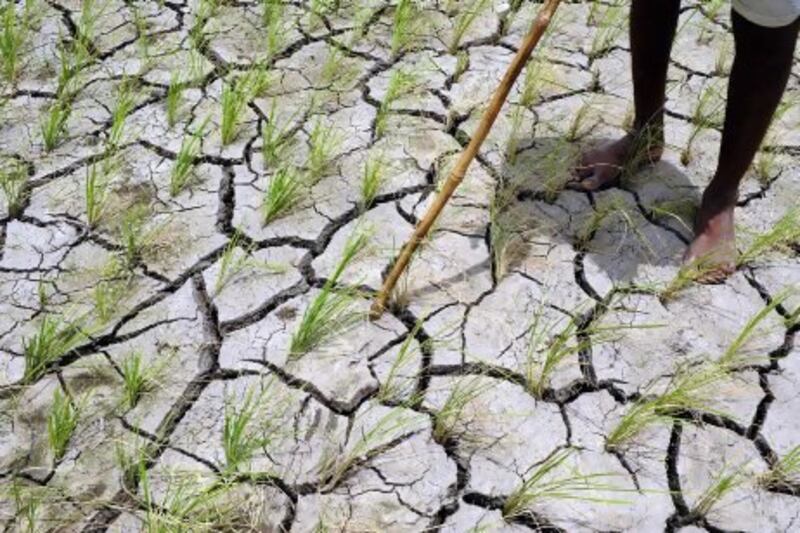Of all the natural resources on which the world depends, the supply and demand situation is most critical for water. There are replacements for oil, but no substitute for water, which is essential to produce virtually all the goods in the marketplace.
Asia, not Africa, is the world's driest continent. The gap between demand and supply is growing in China, India, South Korea, Japan, Vietnam and elsewhere in Asia.
This raises a question: can Asia remain the locomotive of the global economy if it cannot mitigate its water crisis?
India faces greater water distress than China. China's population is not even 10 per cent larger than India's, but its internally renewable water resources (estimated at 2,813 billion cubic metres per year) are almost twice as large as India's. In aggregate water availability, including inflows (which are sizeable in India's case), China has virtually 50 per cent more resources than India.
In 1960, India signed a treaty setting aside 80 per cent of the Indus-system waters for downstream Pakistan, in the most generous water-sharing pact in modern history. And its 1996 Ganges treaty with Bangladesh guarantees minimum cross-border flows in the dry season - a new principle in international water law. That treaty divides the flows of the Ganges almost equally between the two countries. And now India is under pressure to reserve about half of the Teesta River's water for Bangladesh.
But India is downriver from China. About a dozen important rivers flow into India from the Tibetan Himalayas. Indeed, one third of India's yearly water supply comes from Tibet, according to United Nations' data. Nations from Afghanistan to Vietnam receive water from the Tibetan Plateau, but India's direct dependency on Tibetan water is greater than any other country's.
But Beijing, far from emulating India's water munificence, rejects the very concept of water sharing and is building large dams on rivers flowing to other nations, with little regard for downriver interests. An extensive Chinese water infrastructure in Tibet will have a serious effect on India.
So India faces difficult choices. Its ambitious plan to link up its major rivers has remained on paper for more than a decade. The idea was to connect 37 Himalayan and peninsular rivers in a pan-Indian water grid, to fight shortages.
Although the grid was ridiculed by the ruling party's heir-apparent Rahul Gandhi as a "disastrous idea", the Supreme Court ordered last year that it be implemented in "a time-bound manner". Will that really happen?
The experience of the Supreme Court-overseen Narmada dam project in Gujarat doesn't leave much room for optimism. India has struggled for decades to complete Narmada, and yet it is designed to produce less than 7 per cent as much hydropower as China's Three Gorges Dam, completed last year.
With water increasingly at the centre of inter-provincial feuds in India, the Supreme Court has struggled for years with water cases, but the parties keep returning to litigate again on new grounds.
Plans for large water projects in India usually run into stiff opposition from influential non-government organisations, so that it has become virtually impossible to build a large dam, blighting the promise of hydropower.
Proof of this was New Delhi's 2010 decision to abandon three dam projects on the Bhagirathi River, a source stream of the Ganges in the Himalayas. One of these was already half-built; hundreds of millions of dollars were wasted.
The largest dam India has built since independence is the 2,000 megawatt Tehri on the Bhagirathi. Compare that with China's 18,300 megawatt Three Gorges. China's proposed Metog Dam, almost on the disputed border with India, is to produce nearly twice as much power as Three Gorges Dam. China is also building on the Mekong River.
Meanwhile India's proposed river-linking plan seems like a dream: a colossal network to handle 178 billion cubic metres of water transfers a year in12,500km of new canals, generating 34 gigawatts of hydropower, creating 35 million hectares of irrigated land and expanding inland navigation. This is the kind of programme that only an autocracy like China can implement.
Government agencies say that by 2050 India must nearly double grain production, to over 450 million tons a year, to meet the demands of prosperity and population growth. Unless it has more irrigated land and adopts new plant varieties and farming techniques, India is likely to become a net food importer before long - a change that will roil world food markets.
More fundamentally, growing water shortages threaten to slow Indian economic growth and fuel social tensions. The government must fix its disjointed policy approach and develop a long-term vision for water resources.
India must treat water as a strategic issue and focus on three key areas. One is achieving greater water efficiency and productivity gains. Another is using clean-water technologies to open up new supply sources, including ocean and brackish waters and recycled wastewater. The third is expanding and enhancing water infrastructure to correct regional and seasonal imbalances in water availability, and to harvest rainwater, which can be a new supply source to ease shortages.
Boosting water supplies demands tapping unconventional sources and adopting non-traditional approaches, as well as improving the old ways of water-supply management.
Brahma Chellaney is a professor of strategic studies at the Center for Policy Research in New Delhi and the author of Water: Asia's New Battleground
On Twitter: @Chellaney






